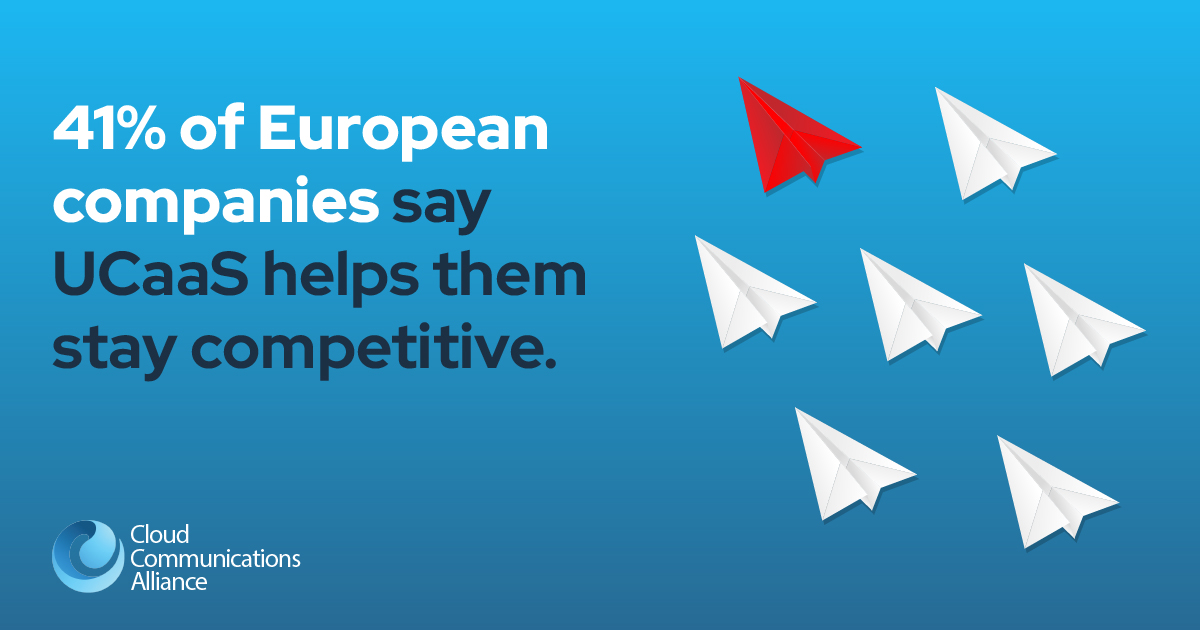Cloud Communications: Key Trends & Innovations In Recent Years

Estimates suggested that global digital transformation investments will exceed $6 trillion at the turn of the decade. Communications would account for 36% of the IT budgets with a global cost of $3,878 billion. What exactly is driving this change?
Why Cloud Communications Are Driving IT Innovation
Cloud communications have enabled many employees and companies to adopt policies such as BYOD (bring your own device) and remote work, among others. In turn, this behavior has led to trends such as modularization of the communications stack.
As a response, service providers are evolving by incorporating new tech. Driving the growth projectile in digital transformation is cloud communication, reducing costs, and improving operational efficiencies for companies worldwide. How big of an impact does it have?
BT Openreach announced in 2015 that businesses in the UK wouldn’t be able to purchase ISDN lines from 2020 on, which shows the speed of innovations in cloud communication. Business communication is quickly moving to the cloud. Innovations in cloud communications are on every business owner’s tech watchlist.
The Evolution Of Cloud Communications In Recent History
To get a clear idea of what to expect from the industry, let us look at the recent history of cloud communications and the trends and technologies evolving in this space.
Collaboration’s Role In UCaaS Expansion
Collaboration tools have become the cornerstone of unified communications, driving the widespread adoption of UCaaS (Unified Communications as a Service) solutions. As businesses prioritize seamless teamwork across distributed environments, innovation in this space has become a competitive necessity.
Cisco, for instance, made significant strides by acquiring BabbleLabs, a company specializing in advanced noise suppression technology. This innovation was quickly integrated into Cisco’s collaboration platforms, enhancing meeting quality through real-time background noise reduction.
Another major move came from Salesforce, which acquired Slack to bolster its presence in the enterprise communication space. By combining Slack’s intuitive interface with its CRM ecosystem, Salesforce positioned itself as a stronger alternative to Microsoft Teams, further intensifying the race to deliver integrated, scalable communication platforms.
The Rise Of AI In Communications
Artificial intelligence (AI) has moved far beyond experimental chatbots and is now deeply embedded in modern communication platforms. From emotion recognition and speaker identification to accent detection, AI enables more personalized and efficient interactions.
A notable example is RingCentral’s integration of DeepAffects, a conversational AI company focused on enhancing video meetings and contact center capabilities. DeepAffects’ features, such as sentiment analysis and intelligent meeting summaries, are now being incorporated across RingCentral’s product suite. This move reinforces RingCentral’s broader strategy to deliver smarter, more context-aware communication experiences.
5G & The Acceleration Of Cloud Connectivity
The rollout of 5G has redefined the communications landscape, prompting major players to secure technologies that support high-speed, low-latency connectivity. Strategic acquisitions have played a central role in preparing for this shift.
Verizon strengthened its portfolio by acquiring BlueJeans, a cloud-based video conferencing platform. Combined with its earlier acquisition of OneTalk and the launch of a new contact center as a service (CCaaS) solution, Verizon is evolving into a comprehensive, end-to-end communications provider, positioning 5G at the heart of its infrastructure strategy.
Similarly, Microsoft deepened its telecom capabilities through the acquisition of Metaswitch, a company focused on software-based communication solutions for service providers. This followed its earlier purchase of Affirmed Networks, expanding Microsoft’s ability to deliver cloud-native, 5G-ready services and virtualized network functions to enterprise and carrier markets alike.
How The Pandemic Shaped Communication Tech
The global pandemic significantly accelerated the adoption and evolution of cloud communication technologies. With a sudden spike in remote work, platforms faced new demands around security, scalability, and reliability.
Zoom’s acquisition of Keybase, a secure messaging and encryption company, is a case in point. The deal enabled Zoom to rapidly address rising concerns about data protection and privacy. In a matter of weeks, Zoom rolled out a new encryption architecture, an effort that reflected its commitment to maintaining user trust while scaling globally under unprecedented conditions.
SD-WAN: The Backbone Of Modern Infrastructure
SD-WAN (Software-Defined Wide Area Networking) has become a foundational layer for cloud-first infrastructure. It offers a flexible and cost-effective upgrade path from traditional network systems, making it easier for companies to support remote work, cloud applications, and hybrid IT environments.
Unlike legacy solutions, SD-WAN enables dynamic traffic routing, enhanced performance monitoring, and centralized management, all while reducing dependency on expensive MPLS networks. This transformation empowers organizations to scale communications efficiently while maintaining quality and security across distributed operations.
Real-World Impact: How Businesses Use Cloud Communications
While much of the innovation has come from technology providers, it’s the real-world applications by businesses that illustrate the true impact of cloud communications.
- Retail Chains use SD-WAN to ensure consistent, high-performance connectivity across hundreds of stores, supporting POS systems, inventory management, and remote operations.
- Healthcare Providers rely on AI-powered transcription and sentiment detection tools during virtual consultations, improving documentation accuracy and patient engagement.
- Financial Institutions leverage secure, encrypted cloud communication platforms to maintain compliance with data regulations while enabling remote collaboration across global teams.
- Educational Institutions have adopted UCaaS platforms to manage hybrid classrooms, allowing seamless interaction between on-campus and remote learners.
These examples show how cloud-based communication solutions have evolved from IT upgrades into core business enablers across every sector.
Challenges & Controversies In Cloud Communications
The journey of cloud communications has been marked by numerous challenges, both during its early adoption and in more recent years. While many of the initial hurdles have been addressed through technological advancements, new concerns have emerged, reflecting the evolving landscape of this dynamic industry.
Challenges Faced During The Early Years
Reliability & Connectivity Issues
In the early stages of cloud communications, internet quality was a significant barrier. Many regions struggled with inconsistent connectivity, leading to problems like dropped calls and poor audio quality. These issues made businesses hesitant to rely on cloud solutions for mission-critical operations.
Security Concerns
Security was a major concern as businesses moved from on-premises systems to cloud-based platforms. Fear of data breaches, unauthorized access, and the lack of standardized security protocols deterred early adopters.
Market Education
Convincing businesses to transition from traditional systems to cloud communications required substantial education. Providers needed to demonstrate the benefits of cost savings, scalability, and enhanced functionality, which often took time to resonate with potential users.
Recent Challenges & Controversies
Data Privacy & Compliance
With the rise of data protection regulations like GDPR, HIPAA, and CCPA, ensuring compliance has become a critical issue for cloud communication providers. High-profile breaches have further emphasized the importance of secure data handling, adding pressure on providers to maintain transparency and adopt rigorous security measures.
Network Dependency & Reliability
Despite advancements in internet infrastructure, network outages and disruptions remain a significant risk. The heavy reliance on stable connectivity means that any downtime can lead to operational delays, financial losses, and damaged reputations, particularly for industries where uptime is non-negotiable.
What's Next For Cloud Communications: Trends & Technologies
Through acquisitions and innovations, companies are building their infrastructures to provide competent cloud communication solutions. Further developments through modularization of the communications stack, integration of AI, and the internet of things will usher in a new era of comms.
Gain more such industry insights, and network with forward-thinking cloud leaders with the Cloud Communication Alliance (CCA), a not-for-profit peer association dedicated to the growth of the cloud communications industry.
Contact us to learn about membership.
Cloud Communications - Frequently Asked Questions
1. What Is Cloud Communications?
Cloud communications involve delivering voice, video, messaging, and collaboration services over the internet instead of traditional phone systems or on-premise infrastructure.
2. Why Are Companies Adopting Cloud Communications Platforms?
They offer greater flexibility, cost savings, simplified management, and better support for hybrid or remote workforces.
3. How Is 5G Influencing Cloud Communications Technologies?
5G provides the high-speed, low-latency backbone needed to support real-time cloud communications across mobile and distributed environments.
4. What Are The Challenges Of Moving To The Cloud For Communications?
Common concerns include ensuring data privacy, managing network reliability, and navigating compliance with regulations like GDPR or HIPAA.
5. What’s Next For Cloud Communications?
Emerging technologies such as modularized communication stacks, AI-driven insights, and deeper IoT integration will define the next wave of innovation.


